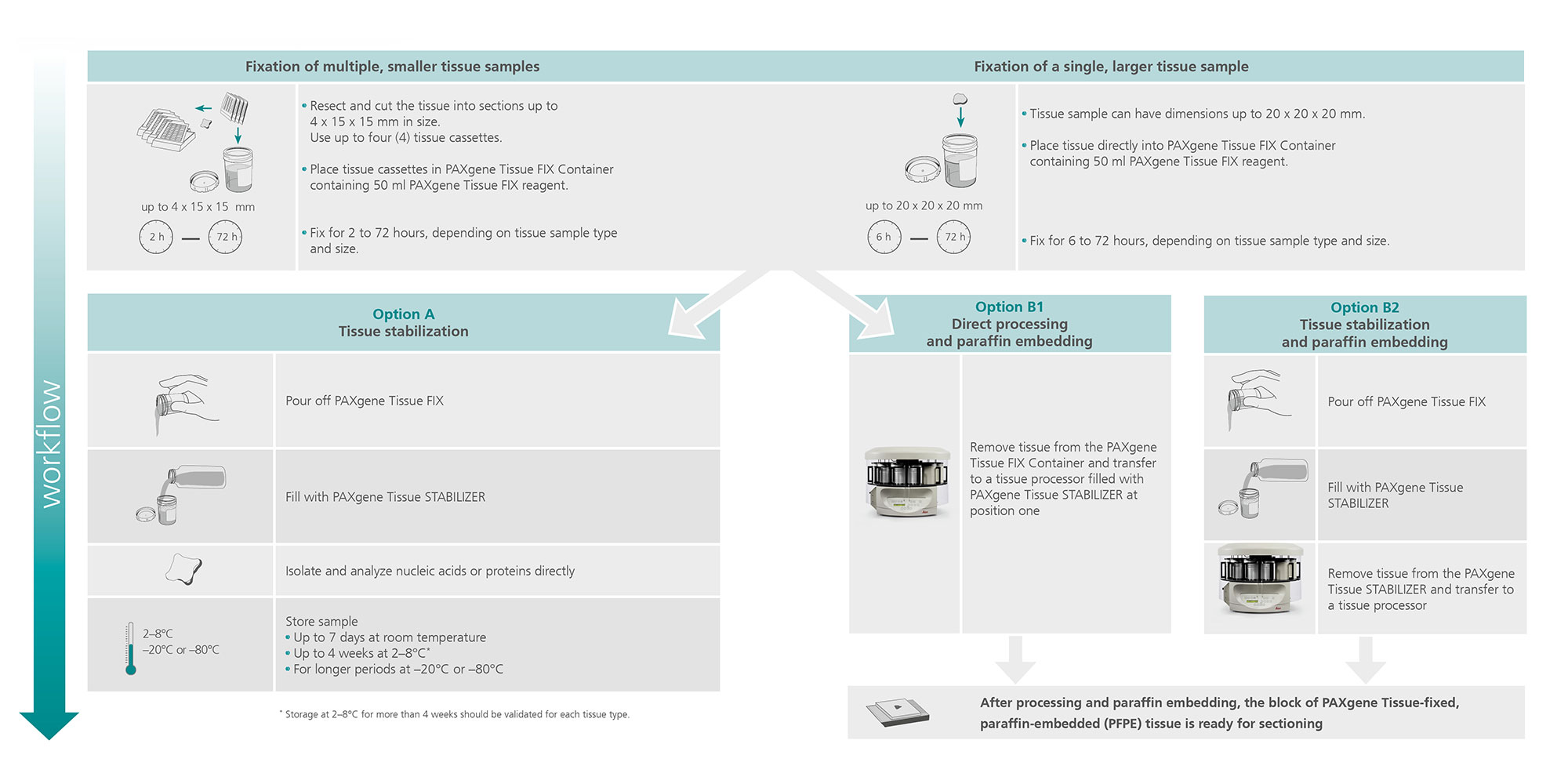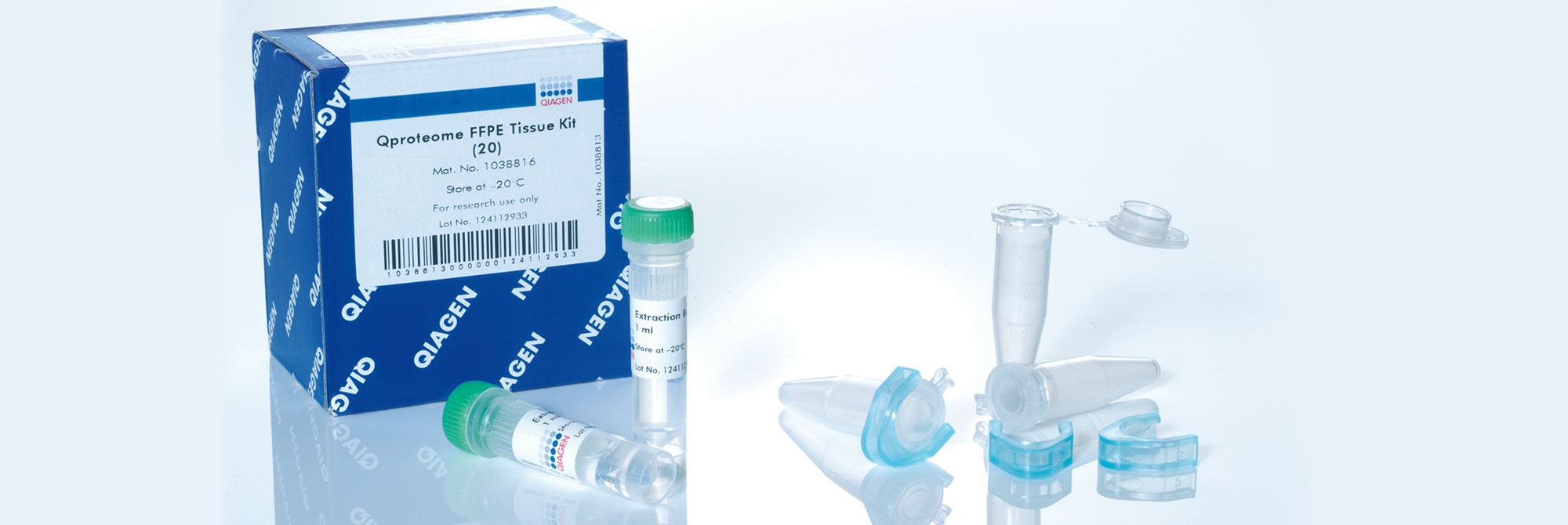Performance
PAXgene Tissue FIX Containers are 50 ml containers prefilled with PAXgene Tissue FIX, which rapidly penetrates and fixes tissues, preserving tissue morphology and biomolecules. The container accommodates up to 4 standard tissue cassettes or a single, large tissue specimen. Fixation with PAXgene Tissue FIX is comparable to formalin fixation, but avoids destructive nucleic acid and protein crosslinking and degradation. After fixation, PAXgene Tissue FIX is replaced with 50 mL PAXgene Tissue STABILIZER Concentrate in the same container.
Note: Fixation rate depends on tissue type and size.
Preserved morphology
Stabilized samples can be embedded in paraffin for sectioning, and can be stained using standard protocols, such as hematoxylin/eosin (Figure 1) and immunohistochemistry (Figure 2) for tissue sections with high staining intensity and clear morphological features.
Enhanced storage
When tissues are stored in PAXgene Tissue STABILIZER, nucleic acids, proteins and morphology of the tissue sample are stable for up to 7 days at room temperature (15–25°C) or 4 weeks at 2–8°C, depending on the type of tissue. Tissue samples can be stored in the PAXgene Tissue STABILIZER for longer periods at –20°C (–15°C to –30°C) or –80°C (–65°C to –90°C) without negative effects on the morphology of the tissue or the integrity of biomolecules.
Note: Specifications for fixation and storage conditions in PAXgene Tissue FIX and PAXgene Tissue STABILIZER were determined using animal tissues. Storage at 2–8°C for more than 4 weeks must be validated for each tissue type.
Note: For storage at –20°C (–15°C to –30°C) or –80°C (–65°C to –90°C), use cryogenic vials with screw caps filled with PAXgene Tissue STABILIZER. For safety reasons, note that the PAXgene Tissue STABILIZER contains 70% ethanol by volume.
High-quality biomolecule stabilization
Nucleic acids and proteins of tissues stored in PAXgene Tissue STABILIZER or as PAXgene Tissue-fixed, paraffin-embedded (PFPE) samples are stabilized and can be purified using the corresponding PAXgene Tissue Kit for RNA and miRNA or for DNA. Use the Qproteome FFPE Tissue Kit for purification of proteins. Purified biomolecules are of high quality (Figure 3) and unmodified (Figure 4). The purified biomolecules are highly suited for a range of demanding downstream applications (Figure 5, Figure 6 and Figure 7).
Principle
The methods for tissue fixation currently used in traditional histology are of limited use for molecular analysis. Fixatives that contain formaldehyde crosslink biomolecules and modify nucleic acids and proteins. Such crosslinks lead to nucleic acid degradation during tissue fixation, storage and processing. Since they cannot be removed completely, the resulting chemical modifications can lead to limitations in downstream applications, such as RT-PCR, qPCR and next-generation sequencing. The PAXgene Tissue FIX Container enables formalin-free fixation of tissue specimens. In combination with the PAXgene Tissue STABILIZER Concentrate, which enables formalin-free stabilization, tissue morphology and biomolecule integrity are preserved by avoiding destructive crosslinking and degradation found in formalin-fixed tissues (Figure 9).
Procedure
PAXgene Tissue FIX Containers are single-chamber containers prefilled with 50 mL of PAXgene Tissue FIX. PAXgene Tissue FIX Containers can accommodate four standard tissue cassettes (not provided), which can hold tissue samples with a maximum size of 4 x 15 x 15 mm. PAXgene Tissue FIX Containers also offer the possibility for direct fixation of larger tissue samples with a maximum size of 20 x 20 x 20 mm. PAXgene Tissue FIX rapidly penetrates and fixes the tissue. After fixation for 2 to 72 hours, depending on tissue size, PAXgene Tissue FIX is removed and replaced by PAXgene Tissue STABILIZER within the same container. Stabilized samples can be embedded in paraffin for histological studies and nucleic acids and proteins can be isolated from the stabilized samples before or after embedding in paraffin.
Applications
PAXgene Tissue-fixed (PF) and PAXgene Tissue-fixed, paraffin-embedded (PFPE) tissue samples can be used for (see References, Tissue Atlas):
- Pathological staining, including hematoxylin & eosin (H&E), periodic acid schiff (PAS), resorcin fuchsin, sirius red and Gomori
- Immunohistochemical staining
- In situ hybridization
Nucleic acids purified from PF and PFPE tissue samples can be used for demanding downstream applications (see References, Technical Notes), including:
- RNA and miRNA profiling
- Long-range and multiplex PCR
- Next-generation sequencing
Proteins purified from PF and PFPE tissue samples can be used in a range of downstream applications (see References, Technical Notes), including:
- Western blotting
- Reverse-phase protein microarrays
- MALDI imaging mass spectrometry
- 2-D gel electrophoresis

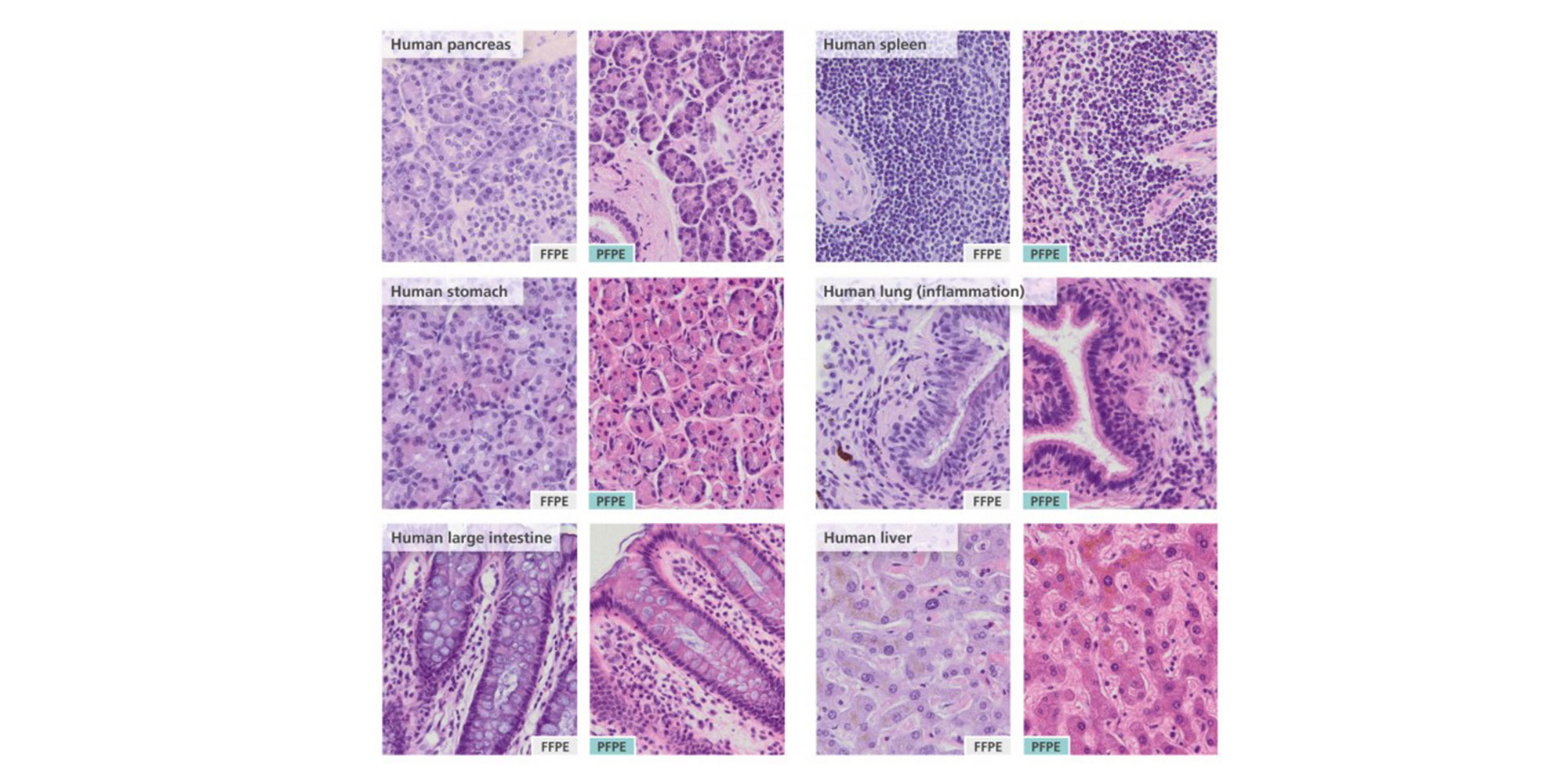
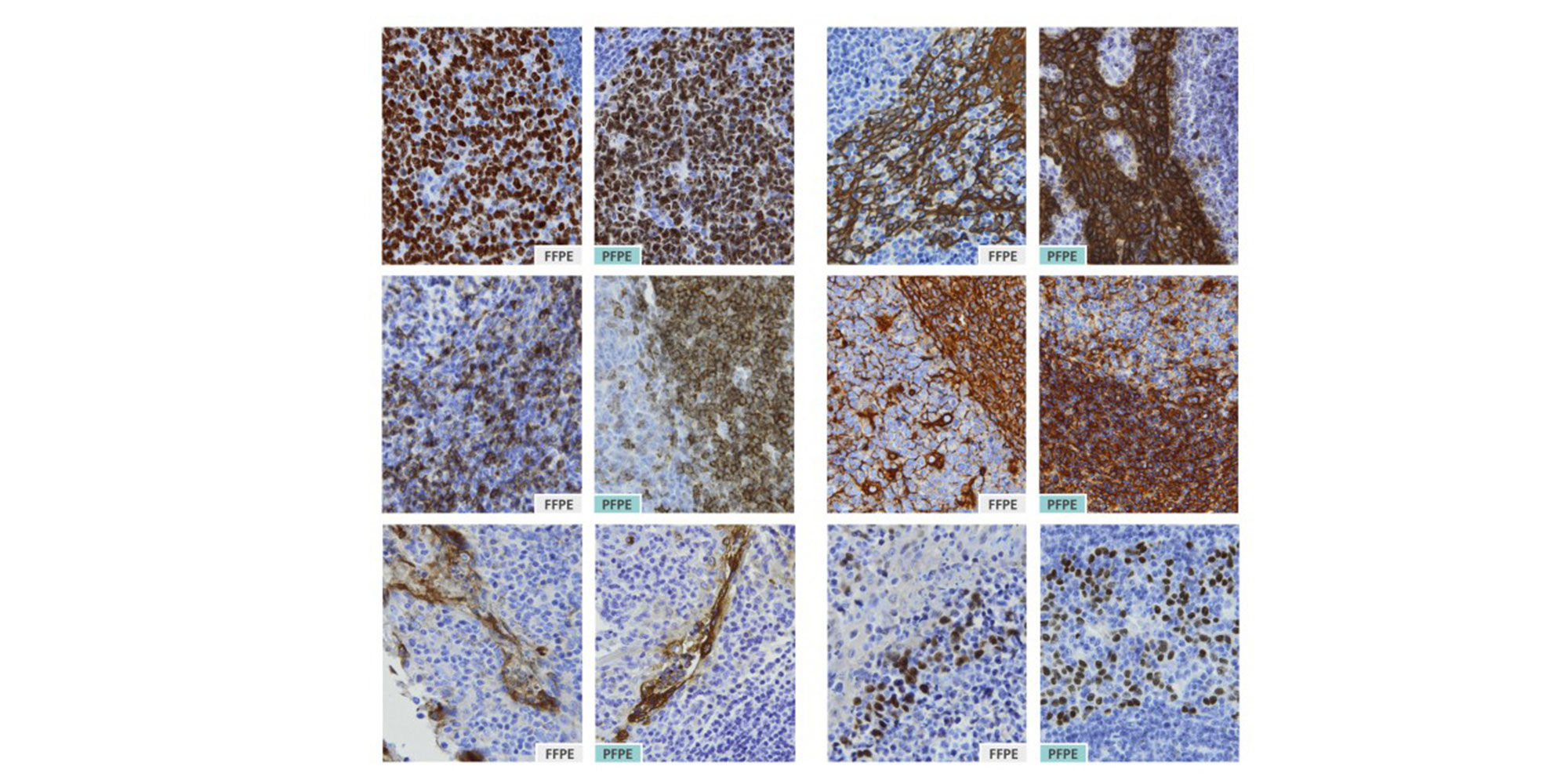
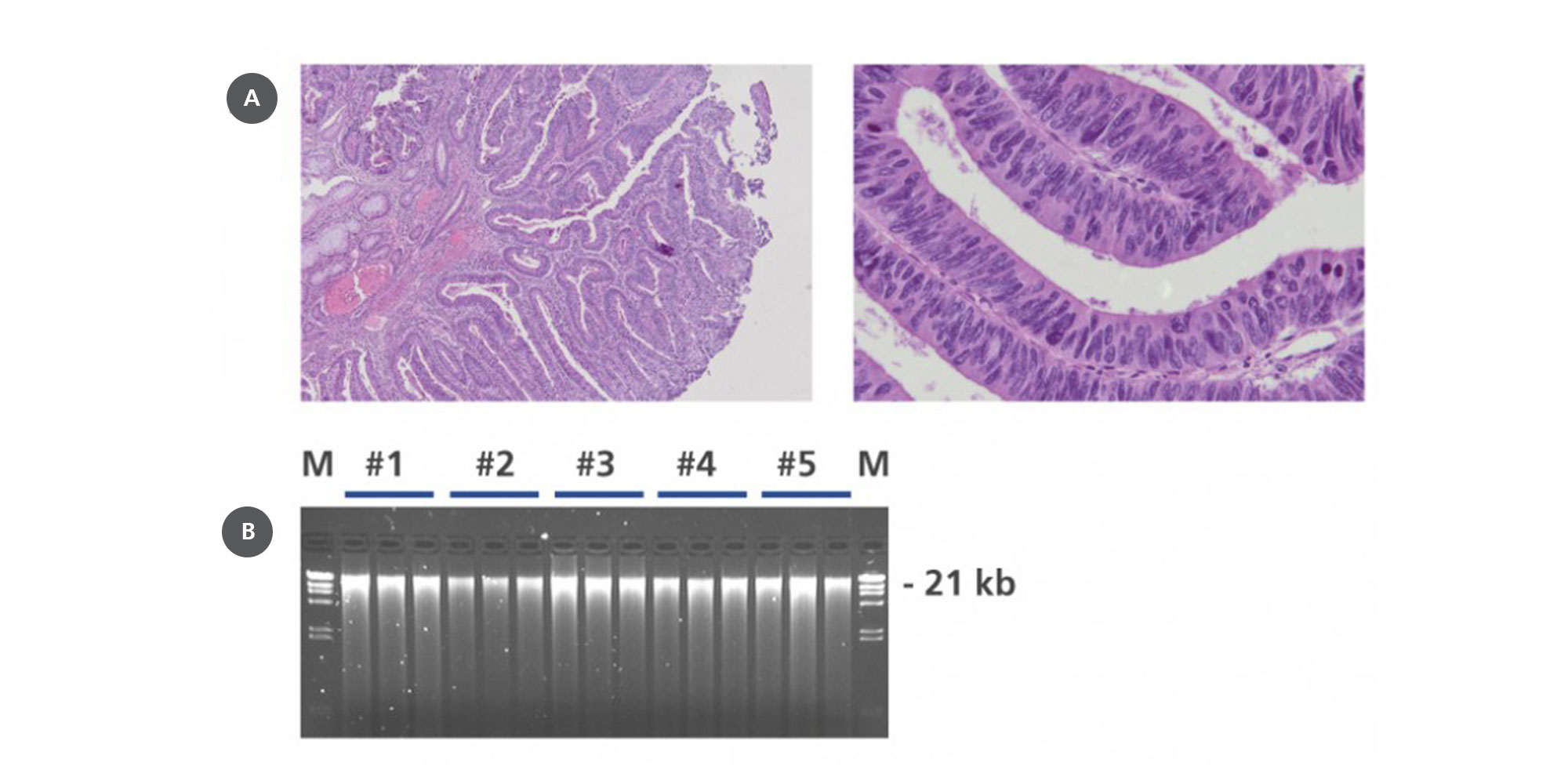
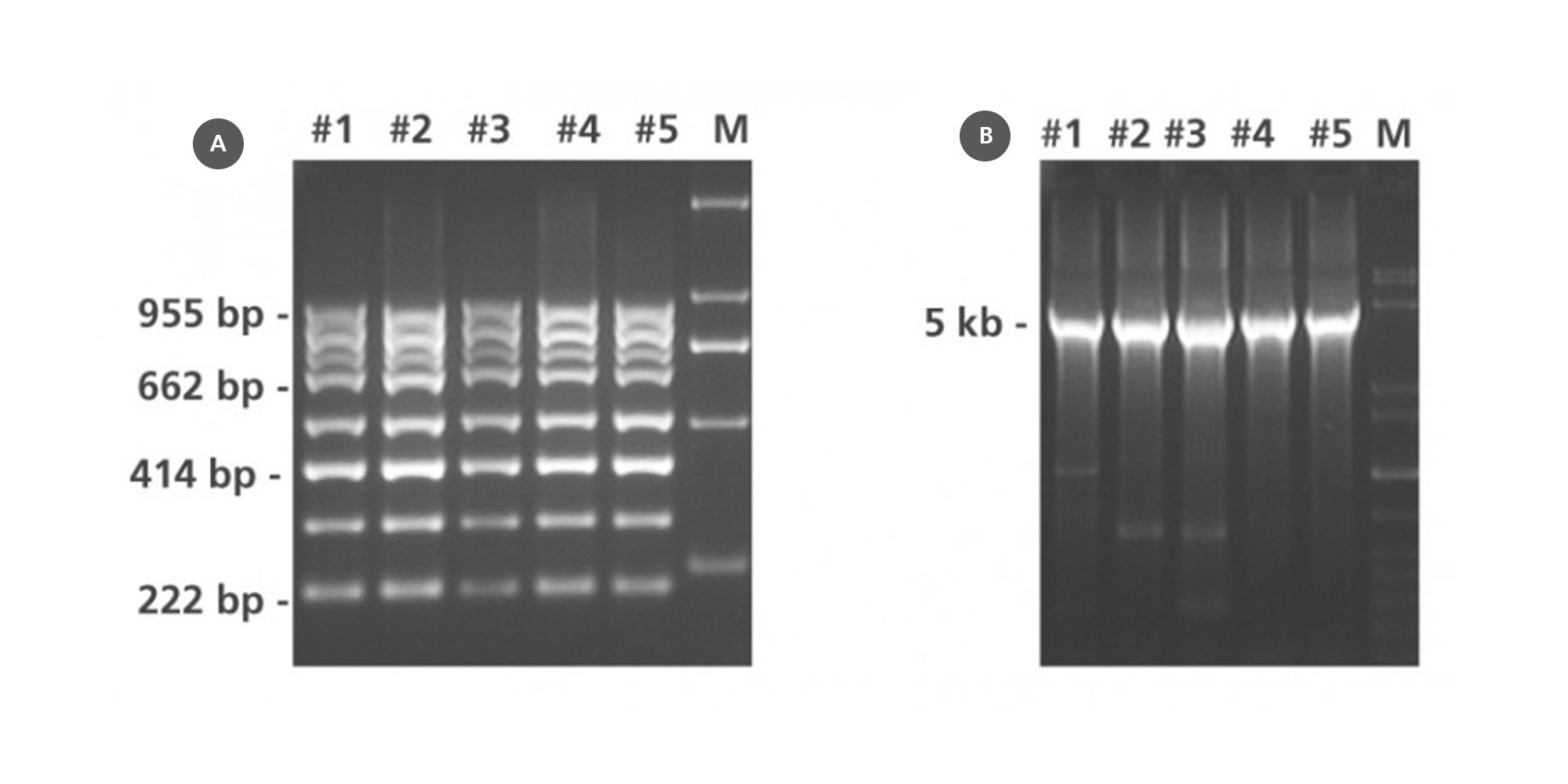
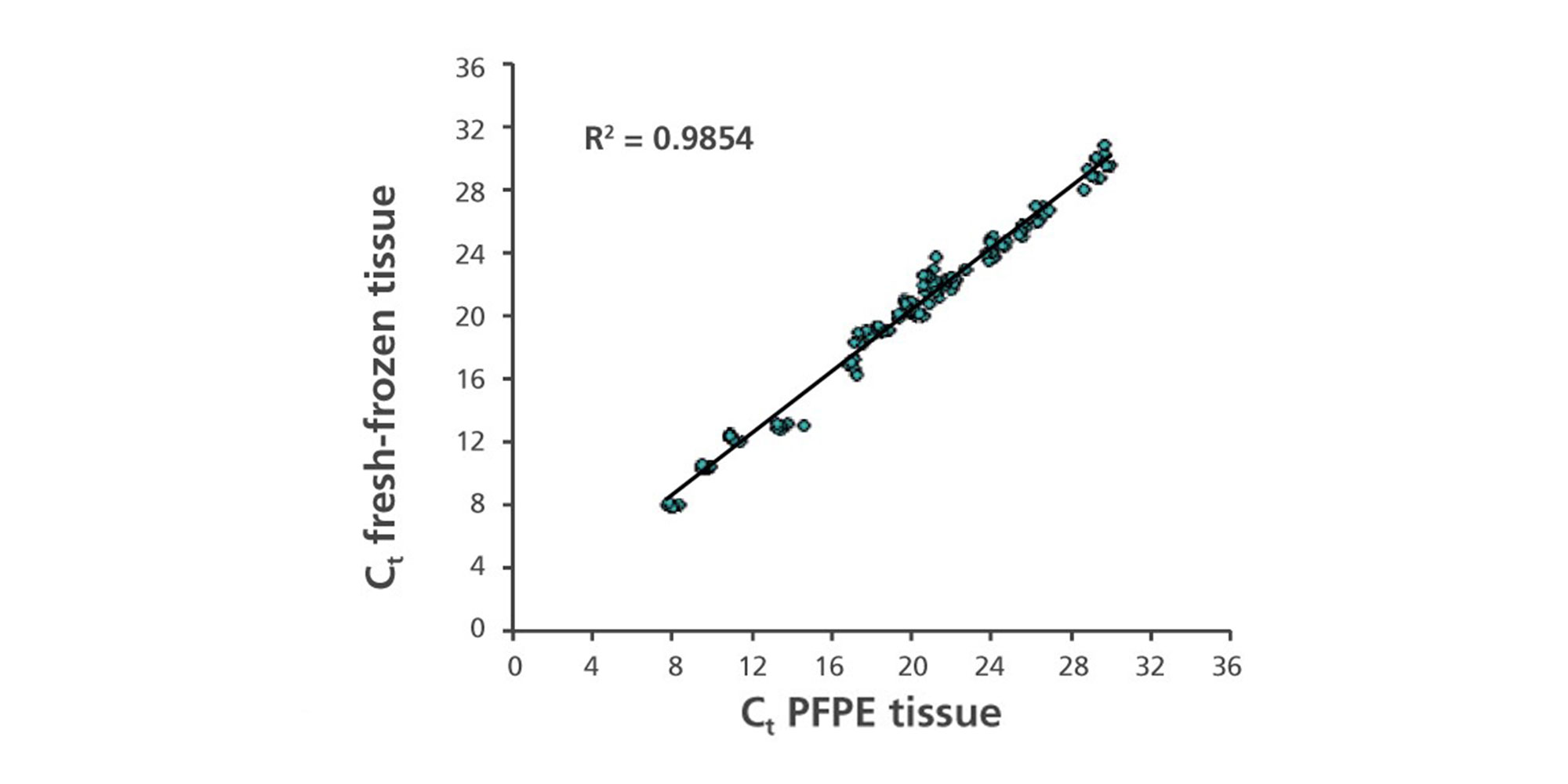
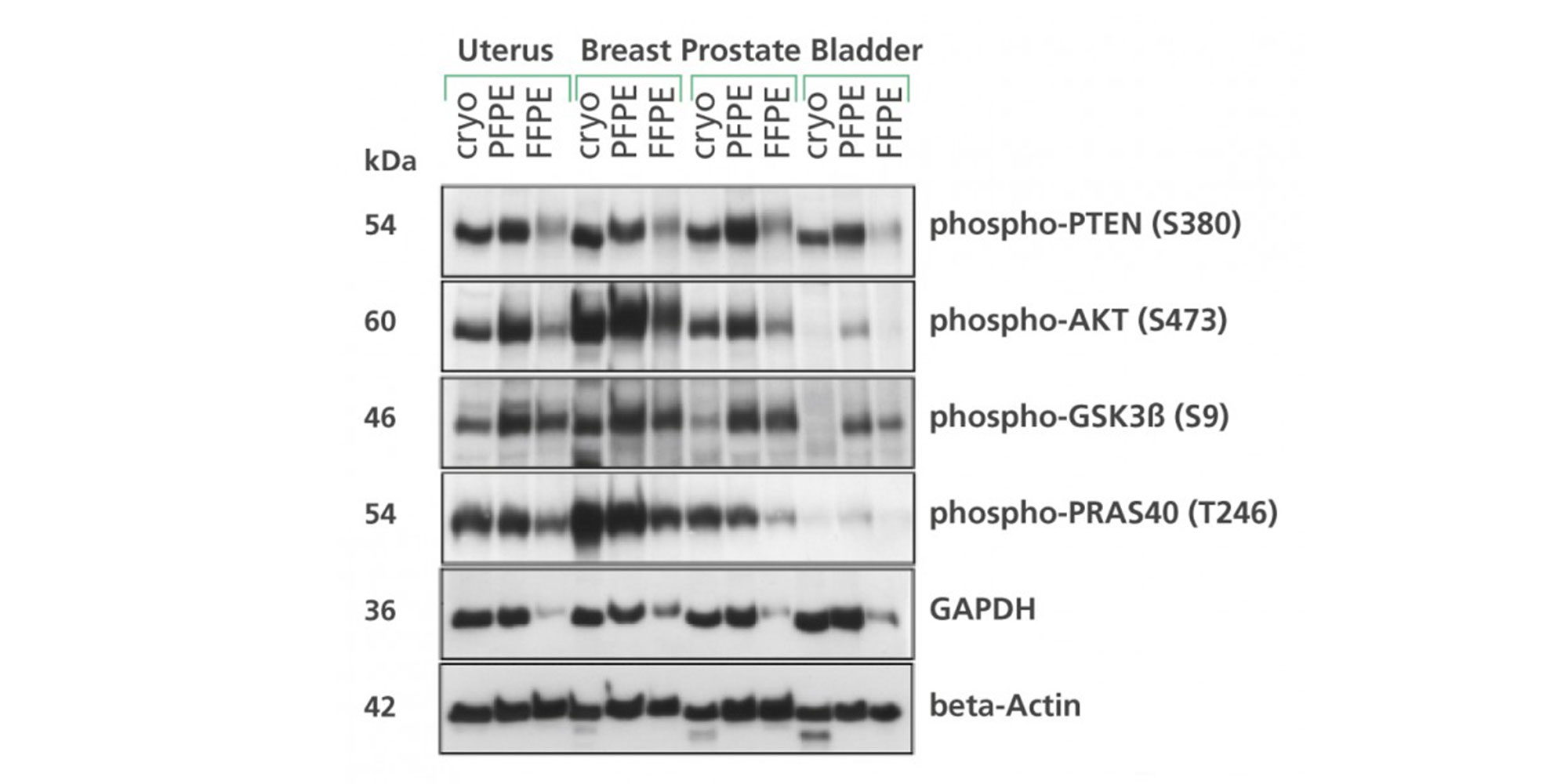
![Figure 7. RNA purified without chemical modification from PFPE tissue using the PAXgene Tissue RNA/miRNA Kit SYBR Green real-time RT-qPCR was performed with 10 ng RNA from cryopreserved, formalin-fixed, paraffin-embedded (FFPE) or PAXgene Tissue-fixed, paraffin-embedded (PFPE) rat tissue (modified according to Groelz et al. 2013). Depicted are the average delta-Ct values (delta-Ct = Ct[FFPE] – Ct[cryo] or delta-Ct = Ct[PFPE] – Ct[cryo]) from 6 different assays with amplicons ranging from 109 to 465 bp.](/storage/images/Content/Product_pages/Tissue/Fixation_Stabilization/SYBR_Green_real-tome_RT-qPCR_FFPE_PFPE.jpg)

